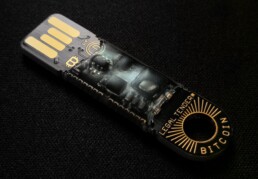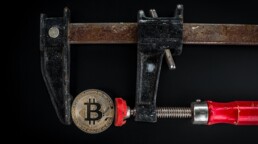How Cryptocurrencies Work
Few people know or remember, that cryptocurrencies originated as a derivative product of another invention. In fact, Satoshi Nakamoto had no intention of inventing another currency.
The most important part of his invention, when he gave the world the whitepaper of bitcoin or” A Peer-to-Peer Electronic Cash System" was that he managed to create a way to create a decentralized payment system. Throughout the 90s of the 20th century, attempts were made to create a digital system, but all these attempts failed miserably. But developing a system as if it were a peer-to-peer file exchange was the right choice
To set up a payment network you need accounts, user profiles and transactions. Easy to understand but then the biggest issue is to prevent users from spending the same money twice with different entities. To solve this, we use a central server that keeps track of all user balances. But if we do not have this authority or do not want a central entity to certify and monitor users, how do we solve the problem?
In a peer-to-peer network, every single node must have a list of transactions and check that they are valid. Most importantly, all nodes must agree with the approved transactions, because otherwise the network immediately collapses.
No one knew how to solve this network consensus problem until 'Satoshi's invention.
If we take away all the marketing and halo of mystery around cryptocurrencies, and go to the 'bones of their definition , we could define them as "a database with limited writeability within it that no one can change unless it meets specific conditions." This sounds like the definition of a bank account in any bank.
To give a correct definition, cryptocurrencies are a method of exchanging value based on internet technology, which use cryptography to carry out financial transactions that are decentralized, transparent and immutable thanks to blockchain technology.
In currencies such as Bitcoin, the database is managed by the various nodes in the network. Each node has a shared ledger inside which the values of each account and the transactions made are put. Transactions are files that say Gigi gave Y btc to Pancrazio and this transaction was signed by Gigi's private key and then sent to the network.
The transaction is known immediately by the network but it takes some time to get it approved. Approval or rather confirmation of the transaction is one of the key parts of the technology. A confirmed transaction is immutable.
Only miners can confirm transactions, through the process called Mining. Mining involves closing blocks of transactions in the blockchain. Before doing this, however, miners must check the transactions, approve them and enter them into the network. When they are confirmed they become part of the blockchain. And to do this they receive other cryptocurrencies as payment.
Technically anyone can become a miner, since there is no central authority that can approve us or not. Of course it takes security rules to make sure that the network is not destroyed by those who have an interest in its demise. In the case of Bitcoin, the system is called proof of work, which is based on the SHA 256 Hash Algorithm and involves the miner finding a hash, to connect the closing block with the previous block. We can define it, to keep it simple, as a cryptographic puzzle to be solved. Solving it, the reward will be some bitcoins. And this is the only way to create new bitcoins.
Cryptography, therefore mathematics, makes the system secure.
So we are not talking about trust between humans, which can be bought or blackmailed. You cannot blackmail or kidnap the child of a mathematical operation.
Some of the most interesting properties of cryptocurrencies are:
Irreversibility: no one after confirmation can cancel a transaction. Wrong address? Nothing can be done about it. Your pc was stolen with the private key? Nothing can be done. The safety net is not there.
Pseudonymity: no account or transaction is connected to real life. However, if you have done a KYC somewhere, your identity is traceable.
Fast and global: transactions are virtually instantaneous, the speed of confirmation depends on the coin, but of ranges from second to 10 min in Bitcoin. They have no borders though since the network is global.
Secure: As long as you own the private key you are safe. Big coins are unlikely to be hacked unless there are deliberate bugs.
Permissionless: you don't have to ask anyone for permission to use your coins. No one can stop you from using them.
Limited Number of Coins: A good portion of cryptocurrencies have a limited supply, such as Bitcoin with its 21 million. In contrast, DOGE has an unlimited supply with a huge daily production. The limited supply is obviously an advantage in terms of maintaining value.
Think about how useful these properties can be to citizen freedom.
Double Spending
Today we are going to learn what double spending is.
Double spending is the manipulation of the blockchain of any cryptocurrency in order to spend the same amount of coin several times, sending this coins to different addresses.
Let's take an example on the bitcoin blockchain.
If we have only one bitcoin on our wallet, and we send it to Marco, this will be awaiting confirmation in the network mempool.
Immediately after closing the transaction to Marco and before waiting for the confirmations, we will send the same amount to Giorgio, and this transaction will also end up in the unconfirmed transaction pool.
When these transactions are checked by the miners, the second transaction will be rejected as invalid and impossible to carry out.
In case of simultaneous sending of several transactions, we will have to wait for the 6 confirmations to understand which of the two transactions will be rejected and which will not
From one wallet to another - The transaction of a Bitcoin
In this article we will see what happens from when we send a bitcoin to when it is received from another address.
There are 3 main parts within a transaction, and these are:
Signing
Broadcasting
Confirming
Let's start from the first one, the signing.
Now, by pressing the send button we are telling the wallet to send the selected bitcoin sum to the address indicated in the space provided.
The wallet then creates a transaction, which is actually a message containing the data of who sends, who receives and how much is sent.
Once this is done, a unique digital signatures is created by mathematically mixing my private key, that is the private key of the sender.
The private key as we know, is a long series of letters and numbers that acts as a password for your bitcoins.
Whoever knows the private key has control of these bitcoins, so you must protect it in every way.
The digital signatures is proof that I have this private key along with my public key.
Remember that each transaction creates a different digital signatures.
After signing the transaction, the system creates a file containing the digital signatures and the transaction message.
This concludes the first step on signing.
In the second step, the broadcasting, the wallet sends the file to the computers that mine the blockchain or have a copy of it.
These computers are known as NODES and each node that receives the file checks it to understand that it is legitimate and correct.
In particular, check that who is sending some coin needs have the funds in his wallet and then confirm the validity of the digital signatures.
Once confirmed as valid, this file is sent to other nodes which repeat the verification process.
When a node receives the file, it keeps it in an area called Mempool or memory pool.
This is a space dedicated to valid but not yet confirmed transactions.
Now let's move on to the status of our transaction, Block explorer is software or a tool on a website to check the status of transactions and navigate the blockchain.
We can check the holdings of all bitcoin addresses, check all transactions and have statistics and information on the network in real time.
If we check our transaction right now, we will see it marked as unconfirmed. this means that our transaction is not yet part of the blockchain.
It is defined as zero confirmation transaction.
In this state the transaction could still be canceled or postponed and we have no guarantees that it will be included in the blockchain.
If you sell products and services, never accept an unconfirmed transaction as proof of payment.
If you remember, when we talked about mining, we said that miners group transactions to create a block of the blockchain and of course miners will take the transactions that will be more profitable, there is a limit to the number of transactions.
So the miners compete with each other to create the blockchain block and this competition is based on mathematical calculations.
The greater the computational power the greater the chances of victory.
When a miner wins the competition, all transactions that are in that block are considered confirmed.
Miners write the history of bitcoin transactions and a block is created every 10 minutes.
When we go back to check our transaction, if it is written inside a block, it will be marked as with 1 confirmation.
Confirmations will grow as block creation increases.
The transaction will be fully confirmed with 6 confirmations and without any possibility of cancellation.
The transaction will now be received and it will unmodifiable.
How to get started with bitcoins!
what are the steps to get to know Bitcoin?
Step n1 Education
You have to understand the basics of bitcoin and what revolves around it, studying our guide and seeing our videos is a good starting point.
You have to understand why people appreciate this new technology, what gives it value and why, what is behind it and what are the ideas that led to its creation.
Step n1 is useful but not fundamental, in the sense that you can buy bitcoins even without knowing anything about it.
The second step is to gain experience with a purchase.
Create a wallet, sign up for an exchange and start moving your bitcoins.
Get experience through small transactions and expect to spend 100 euros that you can consider lost.
Then try to turn some of these bitcoins into ethereum and experience that too.
The third step will be to stay updated on the technology and the market.
And always follow us.
Bitcoin Digital Signatures
Today we explain the meaning of the term Digital Signature towards the bitcoin blockchain.
First, to send any amount of bitcoins to my wallet I have to prove that I am the owner of the private key.
Digital signatures will give you this proof of possession, obviously without making my private key public.
When I submit a transaction, it is mathematically mixed with my private key to create the digital signatures.
When the miners will go to validate my transaction, the digital signatures together with my public key will allow the miners to validate the transaction, guaranteeing possession of my bitcoins and avoiding double spending.
Digital signatures are different every time you sign a transaction, so they will be different for every send to any address.
51% Attack !
Today we understand the meaning of the term 51% attack.
Bitcoin miners in fact use their powerful computers to keep the bitcoin network alive by managing and processing all transactionslike checking that the users dont create any double spending trouble on the network.
This very important work, which guarantees the functioning and trust in bitcoin, is done by controlling the blockchain in its entirety.
To give an example, in the case of a transaction on the bitcoin blockchain from user A to B, the miners will check that the transaction is valid, that there are on the address of user A those bitcoins that he wants to move towards the address of user B.
If most miners certify the transaction as correct, then it will be confirmed and entered on the blockchain.
Now, if you had more than 50% of the computing power of the blockchain, it could theoretically be manipulated, carrying out double spending and other types of fraud such as preventing any transactions from specific addresses or eliminating other miners from the network.
The problem is real especially if the computational power of the blockchain is concentrated in the hands of a few connected and colluding hands. In this, the decentralization of mining should avoid this problem. If we think in the event that most of the computational power is in the hands of two or three large companies, the problem of dealing with a cartel is real.
Learn more about safety here.
Is Bitcoin Anonymous??
Today we are going to talk about bitcoin and his anonymity, the thing that everyone talks about but no one knows about.
Let's start from a fundamental point, bitcoin is completely traceable and transparent thanks to the blockchain network but bitcoin is not completely anonymous .
Bitcoin is pseudonymous.
In fact, the address of your wallet is your identity on the blockchain but if this address is connected in some way to your document, your identity is revealed.
Think for example of when you did a KYC on some exchange, and from this exchange you sent funds to your long-term wallet.
Here at this moment your pseudonymy has been lost and anyone will know how many bitcoins or other coins you have on that address.
If you want to remain totally anonymous you will have to take the necessary measures
How to buy a coin like Ethereum
how to buy a coin, in this case we will take Ethereum as an example.
First of all you must have a wallet, your choice of whether a software wallet or a hardware wallet.
If you don't know the difference, check our article dedicated to what the various types of wallets are.
After that, find your ethereum address.
After you log into your favorite exchange, check that you have enough funds and make your ethereum purchase.
Go to your wallet page on the exchange, look for your newly purchased eths and withdraw your coins. At this time, you will need the address of your wallet that we searched for earlier.
Enter the address, confirm the transaction and you will see your eth pass from the exchange to your wallet.
All in a very simple way.
Various types of Bitcoin wallets
Today we are going into details about the different types of wallets for Bitcoin.
As I have already told you, having a wallet where you can put your bitcoins is essential, it is one of the absolutely necessary steps to invest.
However, there are different types of wallets, all created accordingly to the needs of the owners.
The first diversification is between custodial and non-custodial wallet.
A custodial wallet is for example a wallet on an exchange, where you can use the wallet but you don't have control over it since you don't have the private keys.
Non-custodial wallets, on the other hand, are wallets that you can access via private keys and are in your full control.
This category is divided into hardware wallets and software wallets.
Let's start with the first type, namely the hardware wallets.
A hardware wallet is a physical wallet, practically a USB key that we can hold in our hands.
The most famous models are the Nano S or X and the Trezor.
These wallets are perfect for securing large amounts of coins and are fairly easy to use.
Another point in their favor is the vast support, in fact they allow you to have different types of coins saved inside them.
The safety of use is one of the fundamental points of this type of wallet, safety that you pay dearly given the purchase cost, based on the wallet model chosen, which is particularly high.
These wallets then need to use special software to work, such as Ledger Live for the Nano.
Let's move on to software wallets, which are a type of wallet that we can have on a device such as a phone or laptop.
One of the most popular wallets is electrum wallet, which is free and open source. It is a wallet dedicated only to bitcoins and we must say that it does not have a really nice user interface. But it works, is appreciated by users and is safe thanks to the fact that it is open source.
It also works with some hardware wallets.
Now let's talk about the wallet of hardcore Bitcoin professionist, let's talk about bitcoin core wallet.
Now let's understand, this wallet is specific only for people who know what they are doing since it downloads the entire bitcoin blockchain on their pc, and we are talking about gigabytes of memory.
This wallet is the ultimate in privacy and is obviously only for bitcoin and only for pc.
You will have complete autonomy and full possession of the tools of the bitcoin blockchain, so it is not for those who are just starting out. Even the interface doesn't help.
Now that you know what the various types of wallets for your bitcoins are, you just have to decide what to use in complete safety.
Learn more about safety here.
How to choose an Exchange - Rookies
Today we see how to choose an exchange for buying and selling our cryptocurrencies.
First of all we must understand at what point of our path we are, this guide wants to be a sort of how to for complete newbies.
There are some basic things to know and consider before choosing your trusted exchange.
Let's start with the idea that all large exchanges tend to be more or less equivalent in the service you will use at the beginning, but moving forward you will obviously also notice substantial differences.
One of the first differences that we can check is the trading location of the exchange and consequently which customers the exchange accepts, based on their country of origin or residence.
For example, US clients are not always accepted on some Asian exchanges.
Another difference lies in the methods of payment of crypto or, to better define it, in the method of entry into this world.
In fact, not all exchanges accept fiat money deposits.
Many exchanges only accept stable coins and not all of them. In this case you would find yourself with some euros on your hands without knowing how to get them to your exchange and you would have to find an alternative method, such as switching from another exchange that accepts fiat money.
Then the usage fees must be considered.
We've already talked about what fees are, and how they can destroy your profitability.
The more expensive an exchange is, the harder it will be to make sure your trading is positive.
The KYC or customer verification system is another thing to consider.
There are exchanges that do not allow you to operate without your documents while others give you an operating or withdrawal limit.
And then lastly, the number and which coins are listed on the exchange.
Choosing an exchange with a limited number of coin is not a long-term choice, unless you are a specialist of those specific coins.
Instead, an exchange with a good number of coins, to which more are added, will allow you to increase your future earnings.
Learn more about safety here.












